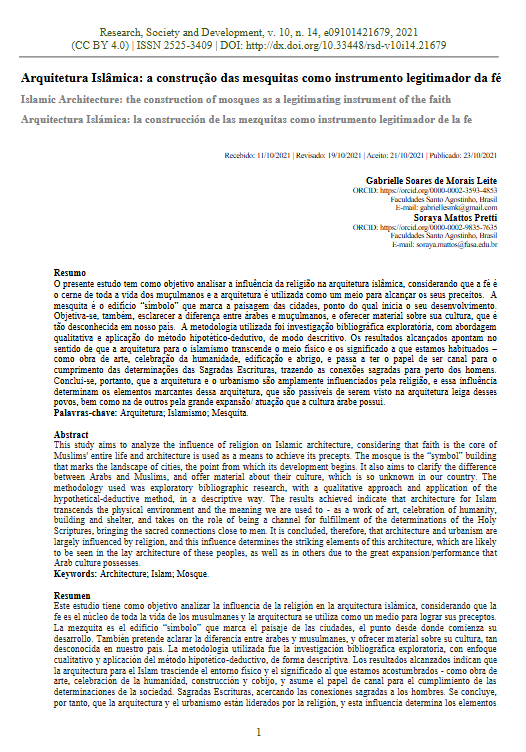
This study aims to analyze the influence of religion on Islamic architecture, considering that faith is the core of Muslims’ entire life and architecture is used as a means to achieve its precepts. The mosque is the “symbol” building that marks the landscape of cities, the point from which its development begins. It also aims to clarify the difference between Arabs and Muslims, and offer material about their culture, which is so unknown in our country. The methodology used was exploratory bibliographic research, with a qualitative approach and application of the hypothetical-deductive method, in a descriptive way. The results achieved indicate that architecture for Islam transcends the physical environment and the meaning we are used to – as a work of art, celebration of humanity, building and shelter, and takes on the role of being a channel for fulfillment of the determinations of the Holy Scriptures, bringing the sacred connections close to men. It is concluded, therefore, that architecture and urbanism are largely influenced by religion, and this influence determines the striking elements of this architecture, which are likely to be seen in the lay architecture of these peoples, as well as in others due to the great expansion/performance that Arab culture possesses.
de Morais Leite, Gabrielle Soares, and Soraya Mattos Pretti. “Arquitetura Islâmica: a construção das mesquitas como instrumento legitimador da fé.” Research, Society and Development 10, no. 14 (2021).
I agree to the terms outlined below:
You agree to upload and assign Mosqpedia Database the rights to use the content worldwide and in perpetuity across all current and future media platforms. Mosqpedia Database may edit, copy, adapt and translate your contribution.
The content will be distributed under the Creative Commons Attribution-Deed – Attribution-NonCommercial-NoDerivatives 4.0 International – Creative Commons
All data will be stored in line with data protection regulations.